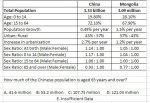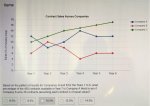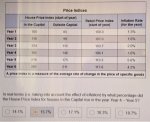Hi everyone! New member here. I am preparing for taking the GRE sometime in December or January 2019 and been out of touch from mathematics for a long while now. I was taking an online questionnaire where I came across some questions I couldn't solve. I will be attaching the screenshots here, would be glad if anyone can help! Also the moderators please kindly let me know if this is the wrong section or if I should post the questions seperately. Thanks! Attaching the screenshots here:
I could solve #5 and #16 but need to confirm if I got it correct. I'll describe how I got to the solutions below:
#5:
I used speed = distance/time and took distance = 115 miles and time = 59 minutes. Converted the answer in mph and got 117 mph as the average speed. Not sure if I should use 59 minutes as the time here.
#16:
Multiplied 39 x 3 = 117 to get the number of exams Division A staff have to take to get back to their current levels of people.
The rest I have no clue on how to approach the problems. I would be glad if anyone can help with anything among these and will be highly appreciated. Thank you for your time!
Have a nice day.
I could solve #5 and #16 but need to confirm if I got it correct. I'll describe how I got to the solutions below:
#5:
I used speed = distance/time and took distance = 115 miles and time = 59 minutes. Converted the answer in mph and got 117 mph as the average speed. Not sure if I should use 59 minutes as the time here.
#16:
Multiplied 39 x 3 = 117 to get the number of exams Division A staff have to take to get back to their current levels of people.
The rest I have no clue on how to approach the problems. I would be glad if anyone can help with anything among these and will be highly appreciated. Thank you for your time!
Have a nice day.





